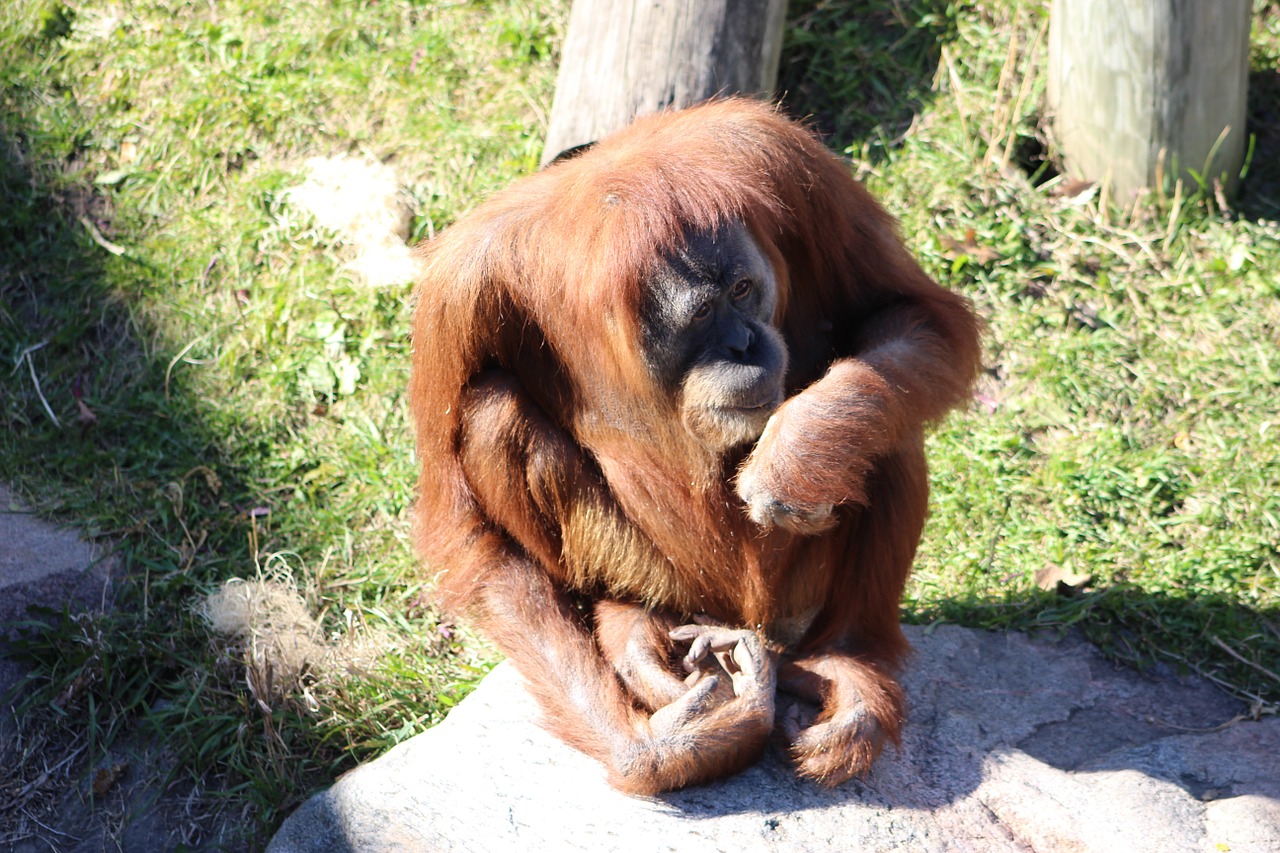Scientific classification: Orangutans belong to the Primate order. Some scientists classify orangutans in the family Pongidae and other scientists place orangutans in the family Hominidae. It is classified as Pongo pygmaeus.
Introduction
Orangutan is a great ape of Southeast Asia. Its name means “man of the jungle” in Malay, an Austronesian language. Orangutans live only on the island of Borneo and in the northern corner of the island of Sumatra. The orangutan spends most of its time in trees, using its long arms and hook-shaped hands and feet for grasping branches and vines. orangutan baby It seldom ventures to the ground, but when it does, it walks on all fours. Traveling through the treetops is difficult, so an orangutan only travels a few hundred meters each day. Each evening it builds a new treetop nest, often by bending down fronds of a betel tree. Older males, however, may travel and sleep on the ground.
Characteristics
Orangutans are characterized by coarse, long, reddish-brown fur. Male orangutans average about 95 cm (37 in) in length and about 77 kg (170 lb) in weight. Females are smaller, reaching about 78 cm (31 in) in height and weighing only about 37 kg (81 lb). orangutan baby The male has puffy cheeks and a hanging throat-pouch. This pouch contains air sacks that help produce a groaning, bubbling call, which can be heard at least 1 km (0.6 mi) away.
Half of the orangutan’s diet consists of fruit, but these animals also eat young leaves, soft inner bark, termites, eggs, and occasionally monkeys. Orangutans accumulate fat in winter to prepare for the monsoon season in April through October, when food is scarce.
Sustenance
Orangutans are solitary creatures. Except when mating, adults usually travel and forage for food independently. When a female is ready to mate, she will seek out an adult male. The pair will stay together for several days until the female is pregnant, then they will resume their solitary ways. The gestational period for orangutans is just under nine months, nearly the same as in human beings. Females give birth to a single infant about once every four to eight years. Infants stay very close to their mothers for the first three years until they are weaned. They spend the next three to five years, orangutan baby becoming increasingly independent of their mother, gaining complete independence at about eight years of age. Occasionally, an adult female with a youngster will pair up with another adult female and her young for up to three days, during which time the youngsters play together.
Conservation
Although it is illegal to kill, own, or export orangutans, poaching continues. Also, the orangutan habitat is rapidly diminishing as a result of large-scale logging and burning of forests. The massive forest fires on Sumatra and Borneo in 1997 and 1998 killed thousands of orangutans and destroyed the habitat of thousands more, endangering the survival of the species, orangutan baby.

